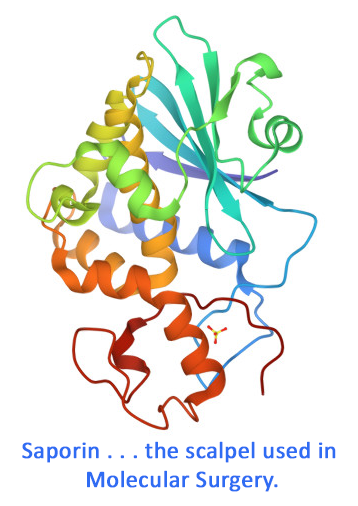SP-CTA is an exciting tool for use in the research of neurokinin (NK-1) receptor-expressing cells of the central nervous system. It can be used very effectively in vivo for increasing sensitization of these neuronal cells. Selectively targeting the NK-1R-expressing cells with the substance P moiety allows the researcher to stimulate only the cells of interest by amplifying their cAMP production with the CTA, without altering the neighboring cells. This effect lasts for a few days, and gives the researcher an opportunity to study behaviors such as those related to the perception of pain or the control of breathing.
SP-CTA is a chemical conjugate of the neuropeptide substance P and the catalytic A subunit of cholera toxin. It stimulates cells expressing the substance P receptor.
SP-CTA is available individually (Cat. #IT-39) or as a kit (Cat. #KIT-39) which includes SP-CTA and Blank-CTA (Cat. #IT-61).
keywords: cholera toxin subunit A, CT, CTA, CTB, catalytic A subunit, substance P, SP, neurokinin receptor, NK-1 receptor, NK-1R, NK1R, central nervous system, CNS, sensitization, cAMP, stimulation
Central sensitization in the trigeminal nucleus caudalis produced by a conjugate of substance P and the A subunit of cholera toxin.
Caudle R, King C, Nolan T, Suckow S, Vierck C, Neubert J (2010) Central sensitization in the trigeminal nucleus caudalis produced by a conjugate of substance P and the A subunit of cholera toxin. J Pain 11:838-846. doi: 10.1016/j.jpain.2010.05.007
Objective: To understand central sensitization.
Summary: Findings suggest that central sensitization leads to activation of an endogenous opioid system. Intracisternal administration of SP-CTA is a useful model for studying central sensitization as a disease process without having to induce a peripheral injury.
Usage: SP-CTA was diluted in PBS and injected in a volume of 10 μl (rats) or 1 μl (mice) over the course of three minutes.
Related Products: SP-CTA (Cat. #IT-39)
Sleep-inducing effect of substance P-cholera toxin A subunit in mice.
Zielinski M, Gerashchenko D (2017) Sleep-inducing effect of substance P-cholera toxin A subunit in mice. Neurosci Lett 659:44-47.. doi: 10.1016/j.neulet.2017.08.066
Objective: To determine the effects of selectively activating SP-expressing brain cells on sleep regulation in mice.
Summary: ICV administration of SP-CTA produces increased amounts of NREM sleep but induces sleep fragmentation.
Usage: 1 mcg/mcl icv.
Related Products: SP-CTA (Cat. #IT-39)
browse all references for this product | back to top



Reviews
There are no reviews yet.